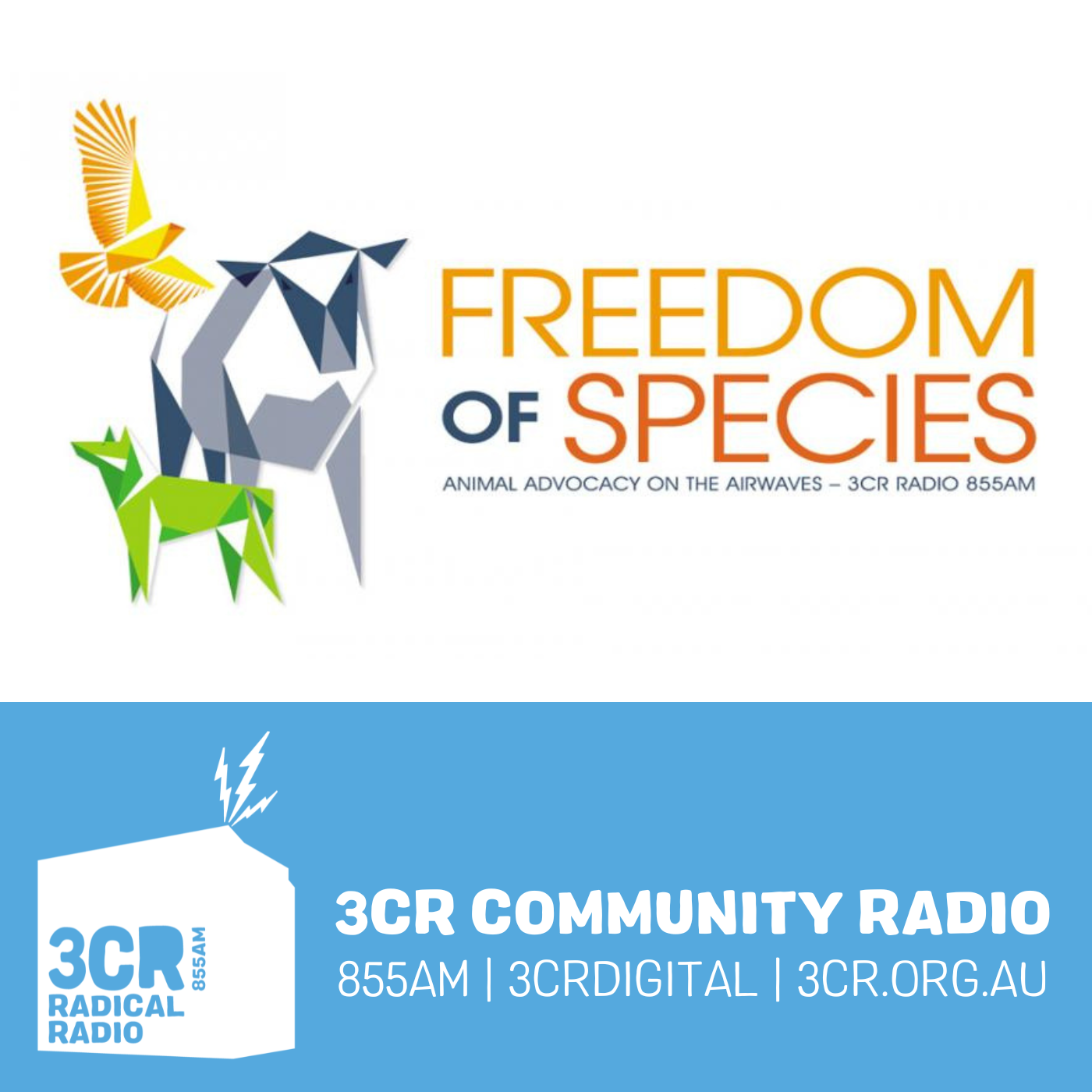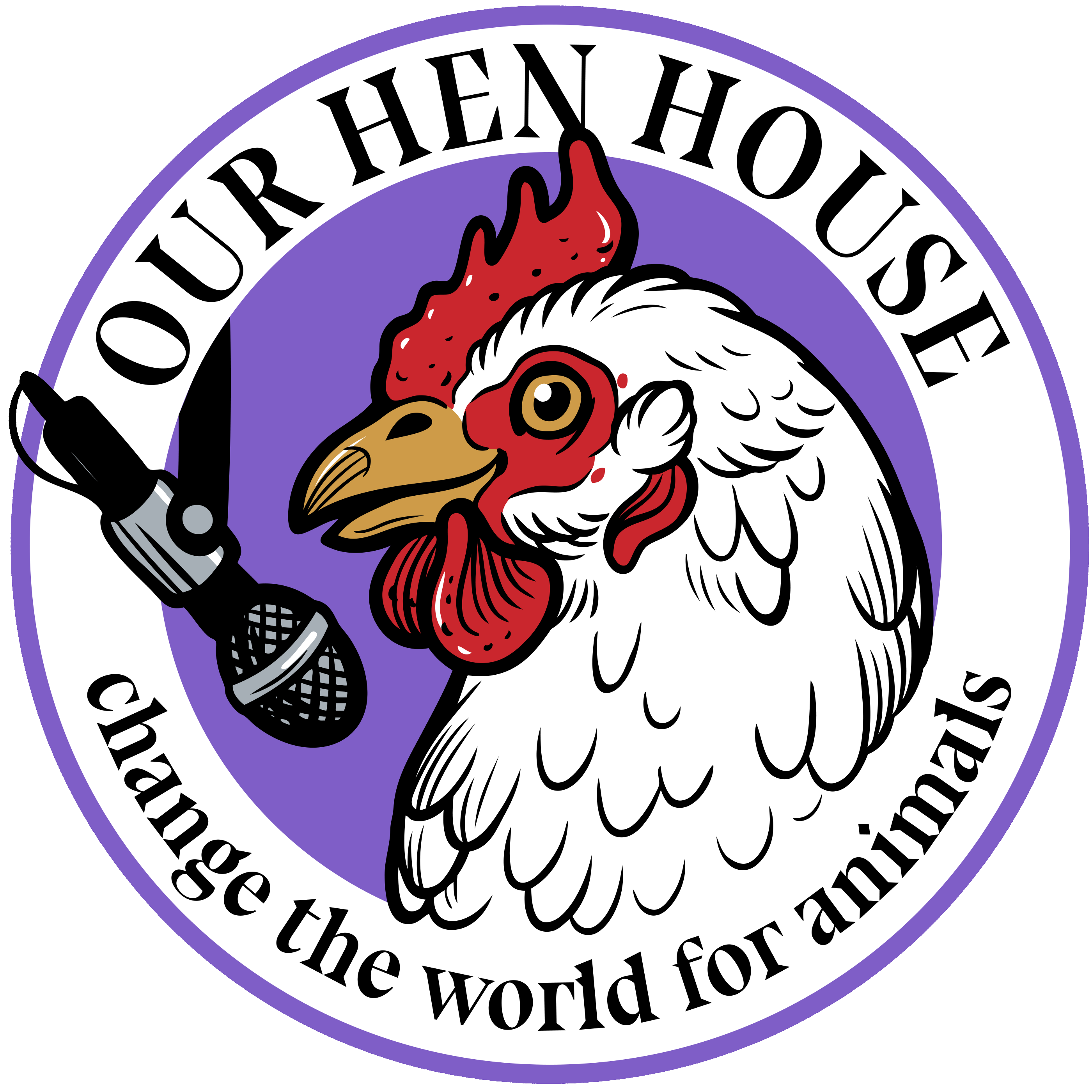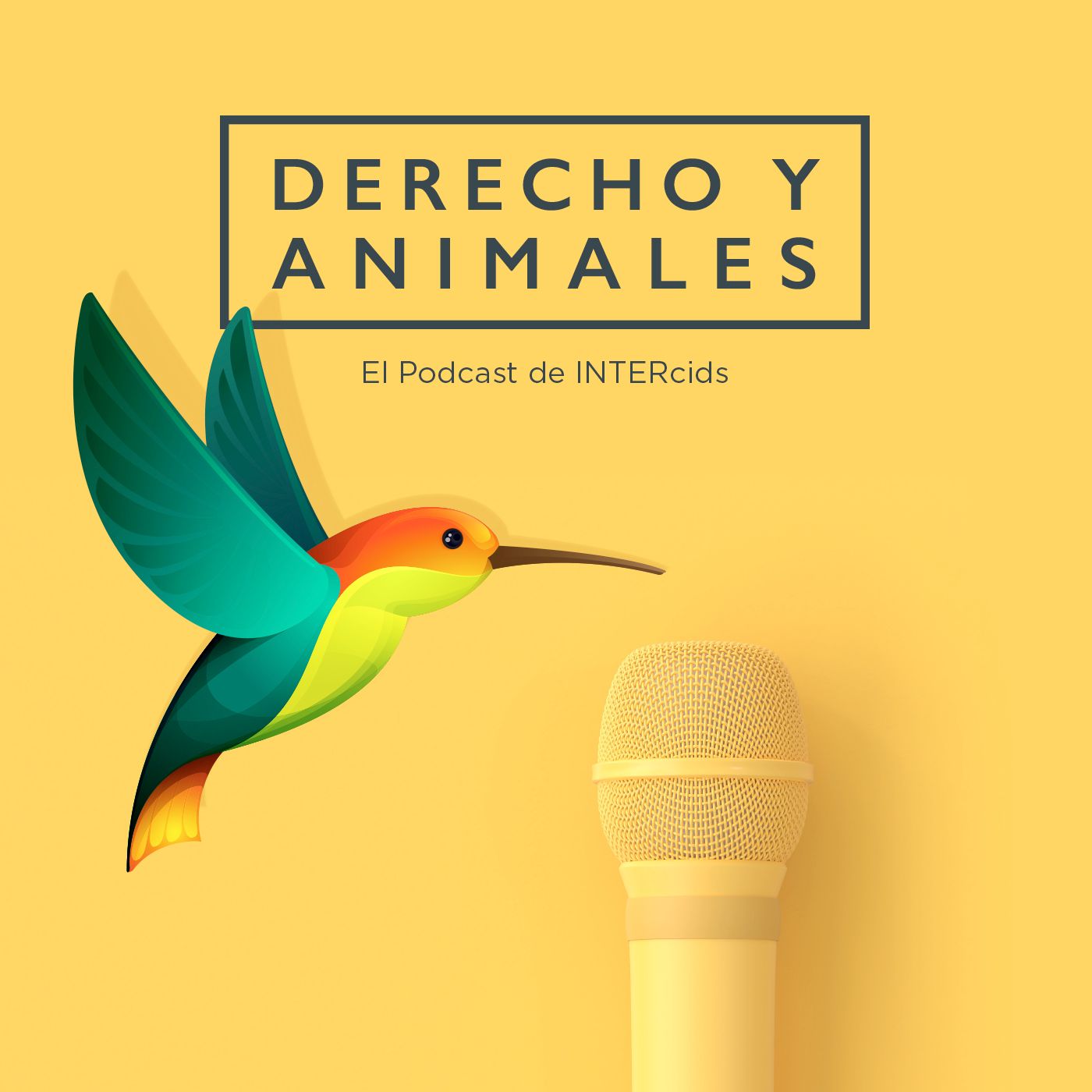
The Animal Turn
Animals are increasingly at the forefront of research questions – Not as shadows to human stories, or as beings we want to understand biologically, or for purely our benefit – but as beings who have histories, stories, and geographies of their own. Each season is set around themes with each episode unpacking a particular animal turn concept and its significance therein. Join Claudia Hirtenfelder as she delves into some of the most important ideas emerging out of this recent turn in scholarship, thinking, and being.
The Animal Turn
S5E3: Feral and Invasive Species with Lauren van Patter
Claudia talks to Lauren van Patter about the concepts of feral and invasive species. They touch on the differences between the two concepts and consider how issues of colonization, reproduction, and human control lead to the categorization of some animals as biosecurity threats.
Date Recorded: 21 September 2022
Dr. Lauren Van Patter is the Kim & Stu Lang Professor in Community and Shelter Medicine in the Department of Clinical Studies at the Ontario Veterinary College, University of Guelph. Lauren is an interdisciplinary animal studies researcher with a background in Environmental Sciences and Cultural Geographies. She has researched urban coyotes and feral cats in Canadian cities as well as free roaming dogs in rural Botswana. Lauren is a co-editor of the volume ‘A Research Agenda for Animal Geographies’, and has published in peer-reviewed Veterinary, Animal Studies, Geography, African Studies, and Wildlife Management journals. Connect with Lauren on Twitter (@levanpatter) or on her website.
Claudia (Towne) Hirtenfelder is the founder and host of The Animal Turn. She is a PhD Candidate in Geography and Planning at Queen’s University and is currently undertaking her own research project looking at the geographical and historical relationships between animals (specifically cows) and cities. She was awarded the AASA Award for Popular Communication for her work on the podcast. Contact Claudia via email (info@theanimalturnpodcast.com) or follow her on Twitter (@ClaudiaFTowne).
Featured: Animal Liberation by Peter Singer; Zoopolis: A Political Theory of Animal Rights by Will Kymlicka and Sue Donaldson ; Managing Love and Death at the Zoo: The Biopolitics of Endangered Species Preservation by Matthew Chrulew; Anishnaabe Aki: an indigenous perspective on the global threat of invasive species by Nicholas Reo and Laura Ogden; Managing Love and Death at the Zoo: The Biopolitics of Endangered Species Preservation by Mathew Chrulew ; Some “F” words for the environmental humanities: feralities, feminisms, futurities by Catriona Sandilands
Animal Highlight: Crabs
Featured: Crab by Cynthia Chris
The Animal Turn is part of the iROAR, an Animals Podcasting Network and can also be found on A
Animals in Politics, Law, and Ethics researches how we live in interspecies societies and polities.
Biosecurities Research Collective
The Biosecurities and Urban Governance Research brings together scholars interested in biosecurity.
iROAR Network
iROAR brings together podcasts that aim is to make the world a better place for animals.
Disclaimer: This post contains affiliate links. If you make a purchase, I may receive a commission at no extra cost to you.
The Animal Turn is hosted and produced by Claudia Hirtenfelder and is part of the iROAR Network. Learn more on our website.
- Leave a Review on Podchaser
- Check out The Animal Turn Merch.
- Support us on Patreon, Buy Me a Coffee, and Buzzsprout.
S5E2 – Feral and Invasive Species with Lauren van Patter
00:00 - Introduction
02:35 - Welcome
- Claudia and Lauren know each other from university, Lauren helped with initial brainstorming of the podcast
- Lauren is a professor at Guelph
- Going to talk about two concepts, feral and invasive species – will be discussing why these are important for animal studies scholars
04:52 - How did you come to be interested in animals?
- Initially interested in conservation and originally did wildlife biology but realised more focus on policy was needed
- Work by Peter Singer, Will Kymlicka and Sue Donaldson challenged Lauren to think about animals lives and interests.
- Connected with Alice Hovorka in animal geography – animal geography thinking about space, place, and nature. Pitched the feral cat project and they decided to work together.
- Looked at urban wildlife and community medicine and it is all about living well in multispecies communities
- Lauren has also asked questions about the back-end about how people ask questions about animals.
08:55 – Feral Species
- What do you make of feral and how does escape fit into it?
- Feral might be thought of equivalent to wild but there is some sort of domestic origin. The idea of “lapsing into a wild state”
- The concept of ferality necessitates a domestic-wild dualism and operates in a space between the two.
- Centrally about control and relationships
- There is always a potential of lapsing out of control
- This designation comes with all sorts of value judgements and conveys more than a categorisation
- If you are a pet that’s gone wild you’ve gone feral – something inherently transgressive or unsettling
- Imagined movement from control to not controlled, how is this different to invasive species?
12:47 - Invasive species
- Often around an alien invasive but it again involves a value judgement
- You will also hear about naturalised species so somehow a species can become part of a legitimate ecological community who somehow “fits in”
- You can also have local species who become “a threat” to other species in the assemblage.
- There is an idea in ecology that there in an ideal that “gets out of balance”
- Feral can also be considered alien and invasive species
- Could domesticated animals like cows be considered invasive if they are environmentally destructive?
- Invasive is inherently to do with the ecological configuration, so cows who are being farmed are not viewed as part of nature.
- Threats seem to come from outside and threaten some sort of inside
- Invasive seems to sit counter to domestication
- The idea of “taking over” with invasive but with “feral” seems to invoke more sympathy
16:43 - Agency with these concepts
- Slipping out from human control is central to how both concepts are understood
- There are particularly imaginaries of how we think nature should be
- There is a colonial and Eurocentric understanding of humans as separate from nature
- When we think about alien and invasive species, a core defining feature is the human agency in moving animals.
- Other animals interact with each other and they aren’t always friendly affiliations and making relationships that help them move
- What is an environment other than a bunch of animals having a bunch of relationships
- Feral, invasive, and naturalised species
21:07 - Biosecurity and ideal ecologies
- About the creation of safe life for a designated population
- Some ecological configurations are somewhat idealised and wildlife management is to help these idealised populations – alien, invasive, and feral species are threats to these desirable configurations
- Safe for who and the idea that you end up walling up or excluding those who are thought of threats.
- Questions of time and ecology and we are trying to construct ideal types
- Interesting to think in historical terms in looking how ideal ecologies have changed over time
- In many colonial states the main objective was to establish ecologies were to create the familiar, tame ecologies of home but now it is an idea of pristine, idyllic ecologies.
- Big shifts in ideals over a short period of time
- Is this because of a better understanding of colonization or a protective measure?
- View of nature as a threat to the settler society but there is a want to preserve nature for its own sake
- About which populations we allow to thrive and the idea that humans are separate from nature
27:24 - Humans, Extermination, and Protection
- People will often acknowledge how humans have contributed to problems but our solutions are often extermination
- Eradication is very quickly an answer to problems but surely we have learnt that that is not the way forward
- Discourse around justifying this violence are interesting, feral cats are blamed for hurting birds but are also should not be subjected to the difficulties of being wild because they are domesticated. The idea that it is more humane to euthanize them than let them live wild.
- The idea off killing being in animals’ best interests is surprising
- The idea that you can achieve the past doesn’t exist
- The question of which natures we are trying to create and why – restoration initiatives are very worthwhile but what are we trying to achieve with some of our re-wilding projects
- Parks and protected areas are also a process of dispossession to create an idealised, separate nature
33:12 - Invasive Logic and Colonization
- Overall ethic that is different to environmental management approaches
- In the paper they talk about how in Anishinaabe teachings that that it is the invasive ideologies of colonial paradigms
- It is expected that plants and animals move and that this mobility is not unnatural but the question is what our responsibilities are once animals have arrived.
- New plants and animals do bring about real problems for the animals, plants, and people there
- Too easily we speak about feral and invasive species as being these inherent problems
37:14 - Blame and Feral Cats
- Fault or blame comes up so often – it’s not birds or cats faults
- There are no easy answers, and we should resist easy answers – we need to see the complexity of the issues
- Some feel that cats have become unfairly vilified
- If you want to have a real conversation about songbird decline, let’s talk about habitat loss, insecticides, land conversion and industrial agriculture. Let’s not simply use other animals as scapegoats
- Focus so much on dealing with “the invasive species” that we we forget to look at structural dynamics
- Lots of complaints with cats is in cities – what about sound in cities?
- Crittercams used to look at cat kills and distance from forests also influences what cats are eating
- Colony caretakers feed the cats say that cats don’t hunt and that it is house cats hunting
- Hard to know who is hunting and how much – there are variations in data collection and cat personalities which shape how much hunting is happening
- Where animals are matters a great deal to thinking through these challenges
- Cats viewed as a disease threat to humans and owned pets but that came up less than the ecological threats
- Trying to make particular ecologies safe and human control
42:27 - Dimensions of Safety and Embracing Ferality
- Trying to make safe particular assemblage of biodiversity
- If we are concerned with biosecurity maybe we need to step away from sanitized relations
- It is celebrated in some spaces because it defies control
- Questions of what we value and how we value different types of nature – adaptive generalists are vilified but niche and rare species are valued
48:02 - Reproduction
- Reproduction seems to be an essential part of questioning these feral and invasive boundaries
- Some “F” words for the environmental humanities: feralities, feminisms, futurities by Catriona Sandilands
- Reproductive successes of some are viewed as threats to other and this is essential to understanding feral landscapes
- Important to think about who is allowed to propagate and how
- We have the illusion that we can control reproduction – our interventions into reproduction are creating more than we intend to reproduce
- Centering this biosecurity conversation around who is allowed to reproduce is tantalizing
- “Problematic overabundance”
51:19 – Quote (Matthew Chrulew)
- “...how is it that societies so devoted to the task of making live—to flourishing populations, healthy bodies, extended lifespans—have been capable of such unprecedented violence? … This critical attitude is too often lacking when it comes to the beneficent and salvific aura of conservation and other prevailing regimes of scientific knowledge of animals. Insofar as these saviour savoirs also exert influence over the actions and lives of animals, they must be assessed as apparatuses of power. It is of course essential that we attempt to combat the anthropogenic extinction and mass killing of nonhuman species, but the ways in which we might do so are neither easy nor self-evident.” - By Matthew Chrulew, Managing Love and Death at the Zoo
- So often ecological and environmental management is presented as value neutral and objective – and the values disappear but part of taking a biopolitical lens is asking which populations are being fostered as the expense of what.
- To show how operations of power are also done through values
- The idea that we need to conserve them there needs to be some sort of economic benefit
- More people appreciate the work bees do – You can’t just set up bees to be bees, there is a desire to capitalize off them
56:51 - Quote (Nicholas Reo and Laura Ogden)
- “According to Anishnaabe teachings, all plant and animal nations have their own Creation stories, wisdom, and uniqu gifts given by Creator, but people are understandably ignorant about these details for newly introduced species. Several community members we spoke with expressed interest in learning about newly introduced plants and animals from the indigenous people who have the longstanding connections to those species as well as from the new species themselves. Bud Biron, cultural educator from the Sault Ste Marie tribe, for example asked, “I wonder if anyone has bothered to ask the Asian carp [Hypophthalmichthys nobilis, H. molitrix, Mylopharyngodon piceus, and Ctenopharyngodon idella] or the hybrid cattail [Typha x glauca] why they are here? We should use our ceremonies to ask these new plants and animals why they are here”.” – By Nicholas Reo and Laura Ogden, Anishnaabe Aki
- The knowledge that you come to a place with shapes how you see that place
- Learning from other animals about how to learn
58:39 - Should we do away with these concepts?
- Useful concepts to explore the histories of ideas and how animals are understood
- They have strong connotations and “arrivant” might be a more neutral concept
- Ferality is also being reclaimed
- Resistance – these are animals who escape our ability to define and control. They challenge our idea of where animals belong
- Words and language evolve.
01:00:40 - What are you working on now?
- Working on Onehealth and community medicine
- Can find Lauren on Twitter (@levanpatter) and her website (https://levanpatter.wordpress.com/)
- What does multispecies home and community look like
- Upcoming paper on Onehealth
01:02:42 - Animal Highlight – Crabs
- Green crabs targeted as invasive species
- Crabs incredible creatures with a wide variety of strategies to live
01:12:27 - Thank you and Goodbye
- Thank you to Animals in Philosophy, Politics, Law and Ethics (A.P.P.L.E) for sponsoring this podcast; the Biosecurities and Urban Governance Research Collective for sponsoring this season; Gordon Clarke (Instagram: @_con_sol_) for the bed music; Jeremy John for the logo; and Christiaan Menz for his editing.
Podcasts we love
Check out these other fine podcasts recommended by us, not an algorithm.

The Animal Highlight
Claudia Hirtenfelder
Knowing Animals
Josh Milburn
Species Unite
Species Unite
The Deal With Animals with Marika S. Bell
Marika S. Bell
The Other Animals
Laurent Levy
Beyond Species
Beyond Species
The Anthrozoology Podcast
Anthrozoology Podcast
Freedom of Species
The Freedom of Species Team
Our Hen House: Vegan & Animal Rights Movement | Stories from the Frontlines of Animal Liberation
Jasmin Singer and Mariann Sullivan
Derecho y Animales
Derecho y Animales
Storytelling Animals
Dayton Martindale
Species
mackenmurphy.org
Animal Law Matters
K & R Animal Law
The Humanimal Connection
Humanimal Trust
The Animal That Changed You
Katya Lidsky
Think Like a Vegan
Emilia Leese
The Shifting Lens: Viewing the Animal Experience
Tiamat Warda Rebecca Madrid
The Salmon People
Canada's National Observer
Comme un poisson dans l'eau
Victor Duran-Le Peuch
.png)
.png)

